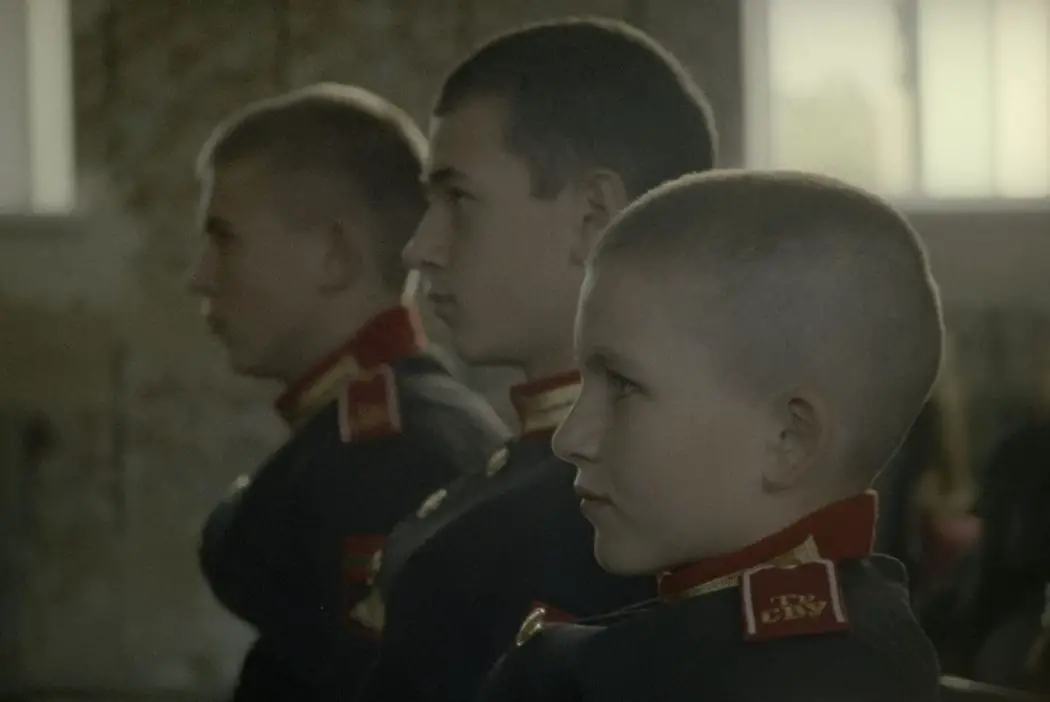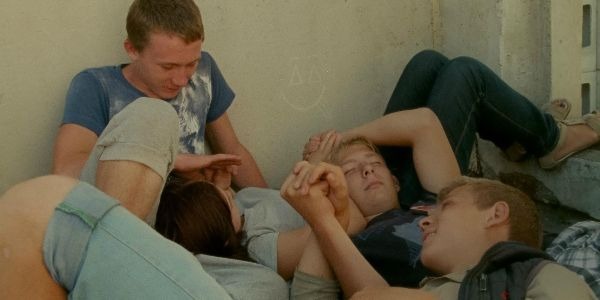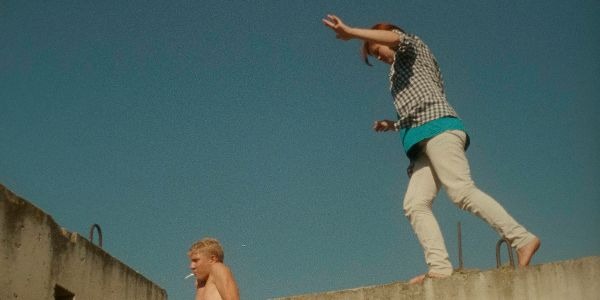TRANSNISTRIA: A Quietly Heartbreaking Look At Seven Vibrant Lives

Film and television writer published at Bright Wall/Dark Room, The…
Swedish documentary director Anna Eborn is no stranger to exploring the remote, the unfamiliar, and the relics of lost times. After spending time on a South Dakota reservation in Pine Ridge and with one of the last speakers of a dying language in Lida, she uses her fourth feature to travel to the tiny, post-Soviet breakaway country at odds with the world around it. Transnistria only exists on some maps.
Merely a narrow strip of land between Moldova and Ukraine, with roughly 550,000 inhabitants, the unofficial nation broke away and formed its own communist society after the fall of the USSR. This fragmented Utopian experiment gone to seed gives the documentary its name, as Eborn spends a summer following seven teenagers as they approach adulthood with excitement, dread, frustration, and – most prominently – the avoidance and delay of youth.
A land out of time
Transnistria gains much character through Eborn’s decision to shoot the film on 16mm, one that makes the film feel as out-of-time as the stubborn nation itself. The occasionally over-exposed footage and unscripted style both evoke a homespun, 1980s feel – aided by a moody retro score – and the country and its inhabitants would seem stuck in a previous decade were it not for the teenagers’ constant connection to their smartphones.
This contrast between the mundanity of Western modernity and the stubbornly preserved communist past drives home the limbo state Eborn’s protagonists find themselves in. Their passports are invalid for international travel, physically cutting them off and psychologically limiting their prospects. They exist, but they are not recognized.

The six boys – Toyla, Sasha, Denis, Dima, Burulya, and Vanya – and one girl – Tanya – followed by Eborn’s camera are uncommonly comfortable and unconstrained by its gaze. This gives Transnistria almost a scripted feel: the participants seem to continue living unconcerned, rarely speaking to the camera to provide the usual documentary voice-overs and contextual observations.
Tanya is the heart and soul of this group; she radiates life and the boys cannot help but be drawn to her vivacity. She transfers affection between them on a whim, but she establishes a special closeness to Tolya. Eborn hints at a shared darkness in their pasts: Tanya may have been self-harming, though the matter is not discussed in detail, and Tolya has been repeatedly referred to psychiatrists rather than physical therapists to treat his speech and sight impediments. This culminates in a year in a mental hospital, and while all the teenagers’ futures are uncertain at best, his is particularly shadowy.
Otherwise, the teenagers’ hopes, dreams, and silliness ring true regardless of their otherworldly, out-of-time upbringing; all are concerned with finding their place in the world and forging their identities – or alternately, putting off this self-discovery and staying in the safety of their teenage years. At the end of the day, growing up is the same regardless of the country one is raised in. Eborn frames this discovery and ennui through long shots and lengthy scenes, letting the teenagers live through the most mundane and extraordinary moments. She is a director more interested in finding the similarities rather than showcasing the differences of these comings-of-age, even if Transnistria could not be more alien to the average Western viewer.

Eborn does not force a narrative, but watching the teenagers make and destroy their world is truthfully compelling. Cut off from the pop culture they consume obsessively, they fantasize about their escapes and creative endeavors. At the same time, they explore abandoned buildings and industrial estates, shrieking with delight as they are able to climb up ladders to the top – or push over a decaying wall in the middle. But these all seem ethereal distractions. “There is no love in our world,” Tanya observes, and the tangible heat of the summer and misery of the winter give way to a languor and melancholy that highlights their social immobility.
An uncertain future
The ending sees Tanya and Tolya goofing off in an abandoned building, playing out the music video they want to make. But as Tanya then films Tolya singing along to a pop song, the mood switches to a haunting, overwhelming sense of stagnation and desperation. This conclusion brings backs one of their earlier interactions in the film, when Tanya expresses her plans to leave Transnistria and find a future with a long-distance boyfriend in Athens. This has weighed heavily on all her male companions’ minds, leading their actions a somberness between resignation and desperation, but Tolya – with his fraught past – has been hardest hit by the possibility of this loss.

Then, he observes that “you will leave soon, and the next time you see me I will be dead.” The realization shakes viewers’ understandings of these youths: however carefree their summer antics and avoidant their behaviours, they know that their chances are not good. And in this ending scene, his lyrics – “I am completely mad about you, will you really forget me? I’m afraid I’m not going to return to you. I’m afraid I won’t come back to you.” His plaintive voice leaves a lingering sense of unease: despite their silly dancing moments before, the future is a blank.
Conclusion
Transnistria is a rare gem, straddling documentary and drama to allow an intimate look at a relic of a past time. As its subjects simultaneously revel in and express suspicions of modernity, Transnistria is not concerned with answering the questions it raises – of statehood, of self-determination, and of the youths who know nothing else – that it is with capturing an intimate story of love, friendship, and delaying futures.
What are your favorite documentaries? Do you think that teenagers make good subjects? Share your thoughts in the comments below.
Transistria is currently streaming on MUBI US.
Watch Transnistria
Does content like this matter to you?
Become a Member and support film journalism. Unlock access to all of Film Inquiry`s great articles. Join a community of like-minded readers who are passionate about cinema - get access to our private members Network, give back to independent filmmakers, and more.
Film and television writer published at Bright Wall/Dark Room, The Skinny, Screen Queens, One Room With a View, and FlipScreened. Mamma Mia: Here We Go Again is a cinematic masterpiece.













